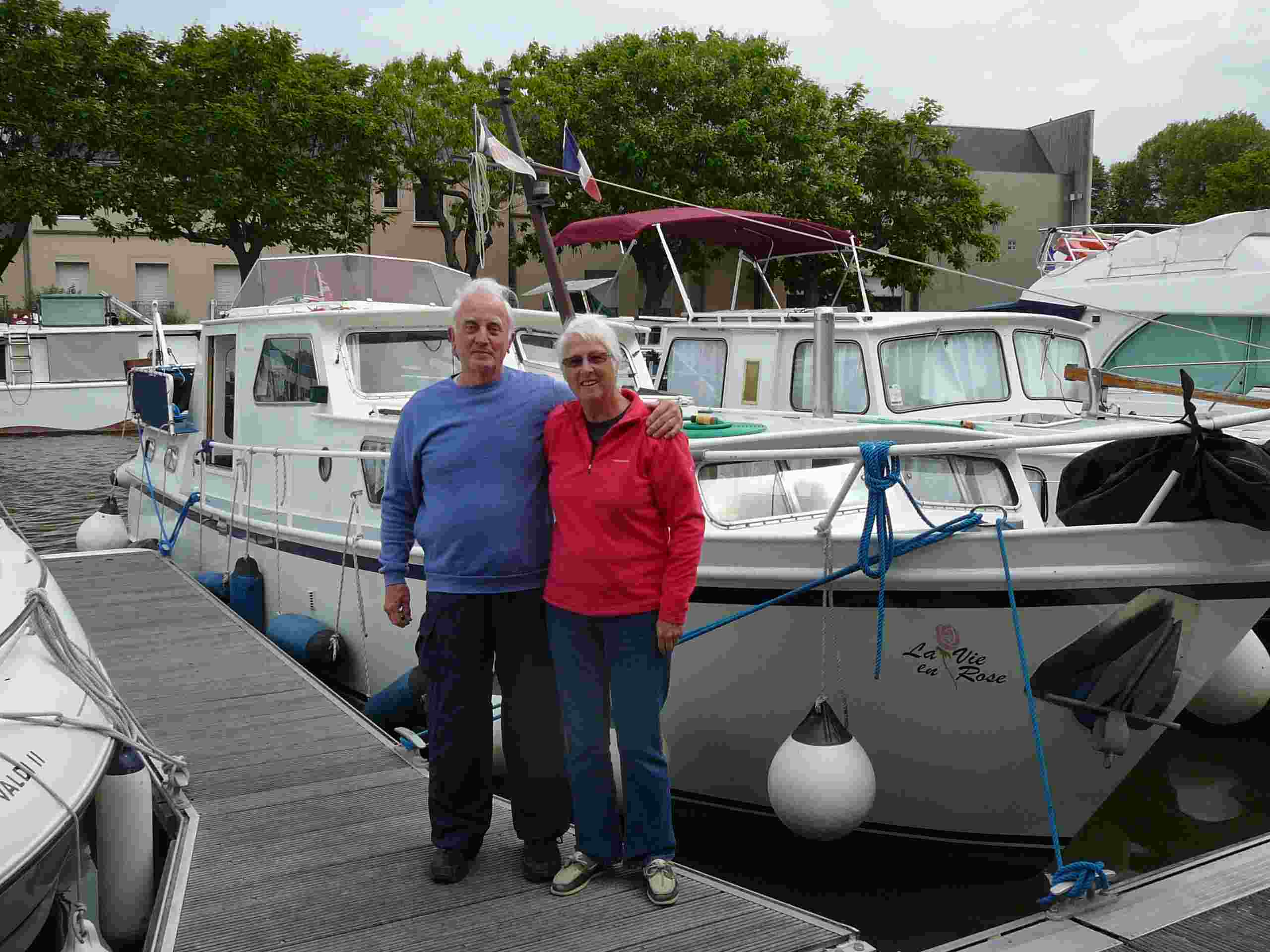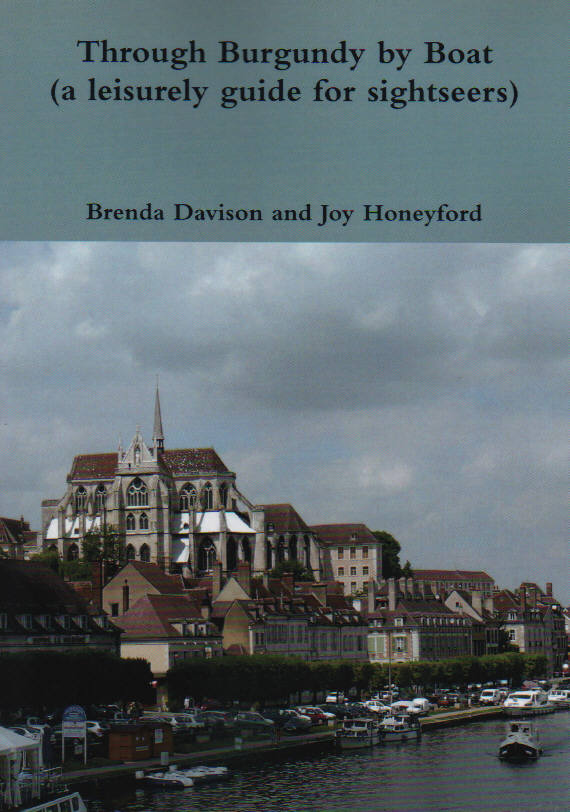Going The Wrong Way Up The Rhone
This article is dedicated to the memory of John Salter who, with his wife Jane, travelled most of this journey with us but sadly died shortly afterwards.
I have heard France described as a “good museum followed by a fine meal with sunshine on top”. This proved to be an excellent description of our trip up the Rhône, with the added benefit of being on our own boat and enjoying the scenery and the experience of using the French waterways.
The time had come to bring our sailing catamaran Chefren back through France after three years in Greece and we were a bit worried. The Rhône, has a fearsome reputation. We had travelled down it without any problems, delighting in the scenery and the ancient towns. But now we would be travelling against the flow which would be a different matter and we knew that two years previously floods had washed away the marina pontoons at Arles and Avignon. Would our 18 hp engine be man enough for the job? What about the Mistral? No one knows when this cold, unrelenting, north wind will blow, or how long it will last when it does. It can make life difficult for small boats.
In Spring the melt-water from the Alps swells the river, and similarly Autumn rain might make the current too strong. August or September would seem to be good times and we planned accordingly.
Our 35ft. Prout Snowgoose, had proved to be an ideal boat in size and shape for the canals and rivers on our previous trip. Her shallow draft made negotiation very easy and her width (15 ft.) was not too much of a problem. She is ideal for living aboard and we knew that once she was well fendered she would cope with the locks and bridges without problems.
We had the mast removed in Port Napoleon, a marina at Port St. Louis du Rhone, and tied on every fender we possessed, fastening wooden planks outboard of them to protect the hull in the locks and tunnels.
The Rhône has been used as a thoroughfare since Greek and Romans times when its fierce currents, shallows, floods and droughts made it a very uncertain highway. Nowadays massive locks, barrages and hydro-electric schemes have helped to tame it so that it can usually be used by all but the most under-powered craft. In places, the current can still run quite swiftly, depending on how much water is being released by the hydro-electric power stations incorporated into the barrages. But we were finding it a delight to navigate as new vistas opened up around each bend.
Passing through the sea lock at Port St. Louis on September 6th, just before 0900 hrs, we were delighted to find that we only had 1 kn. of current against us. We made a speed of 4.1 kn. over the ground. It augured well; the sun was shining and we began to relax.
The Carmargue itself was hidden behind tree-lined banks but we saw herons, cormorants and egrets which were using channel markers as vantage points from which to spot their prey.
We motored along under a blue sky in temperatures of 32 C. with all the windows and hatches open, waving cheerily to some yachts coming the other way and pulling to the side of the channel when we spotted a laden barge heading towards us. As it passed we fell foul of its considerable wash and were tossed about, dipping our nose into the trough and scooping up water across the foredeck. I rushed into the cabin to close the fore-hatch but too late, I was met by a huge wave which completely swamped the saloon.
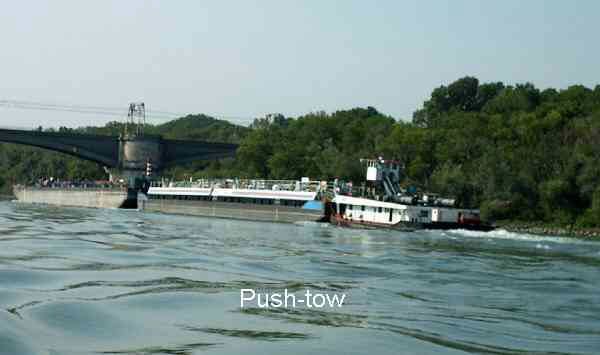
Thankfully it was fresh water and it was so warm that by the time we reached Arles we had dried everything but the carpet. We were always very careful from that point, as we passed some huge push tows as well as barges.
At almost every place we stopped there was a historic town or village to explore, and delightful eating places to discover. The first was Arles, an ancient Roman city with many splendid remains including an amphitheatre which is still used for bull fights. Sadly, most of the marina pontoons have also become an ancient monument, lying twisted and forlorn on the river bank. But there was one pontoon left, with water and electricity, and room for a few boats. That evening we ate golden crêpes in the Place du Forum where we had been entertained by a fire eater during the Rice Festival on our previous trip.
Waking next morning I was delighted to see a bright-blue kingfisher using our pulpit as a vantage point from which to fish. When he had flown away we made our way ashore to buy our vignette from the offices of the VNF (Voies Navigables de France). This was our permit to use the French waterways.
One of the few patches of industrialisation is at Tarascon, north of Arles, where the smell was very unpleasant. Industry on the Rhône is sufficiently far apart not to detract from the pleasure of the countryside. We were quickly past, travelling at 4.8 kn. despite a contrary wind.
Now we encountered the first of twelve locks between Lyon and the sea, Vallabrègues at Beaucaire, which was open in our direction. We went straight in and the whole process took half an hour. The Rhône locks are huge; the fall varies from 9 to 26 m. Using them is not a problem as they are fitted with floating bollards which means that once securely tied on (two ropes) we did not need to adjust them.
We usually radioed ahead and were told how long we would need to wait. Keeper’s instructions are also conveyed by loud speaker and by traffic lights at the entrance and exit. Whilst most lock keepers had a little English we found being able to speak some French was useful.
Every lock has a small pontoon close to the huge gates. At first glance we saw ‘No Parking’ signs on them, but closer inspection revealed a notice, in French, saying that it was designated for pleasure boats waiting for the lock. These pontoons were very useful as we sometimes had to wait up to half an hour and they helped us keep out of the way of commercial traffic.
At Avignon, the former seat of the Holy Roman Empire, all traces of the well-equipped marina had gone apart from the harbour master’s office, and showers, in a converted barge. But there was space on the quay with water and electricity and the friendly harbour master supplied maps and information.
In Avignon more than 100,000 people live in a maze of narrow streets behind the protection of a massive wall. The huge 14th century fortified Pope’s Palace is a masterpiece of medieval architecture with guards in traditional dress. Ancient squares and alleyways criss-cross the town, and a shady park leads to a rocky viewpoint above the river.
Most boats we encountered had been travelling south but here we met one travelling north and suggested travelling together to make it quicker negotiating the locks. They were happy to do this and continued with us to Macon, on the Saône, and we formed one of the nautical friendships which are such a delight of boating.

The sun-bleached village of St. Étienne-des-Sorts is a former bargees’ settlement and keeps much of its ancient charm, added to which it boasts a small pontoon and a splendid cave where we bought wine en vrac, taking empty water bottles to be filled with Côtes du Rhône, and Côtes du Rhône Villages at less than 1 euro per litre.
Next our trip took us through the biggest of the Rhône locks, the Bollène at 26m. but which can fill and empty in 7 mins. It is a huge concrete lined hole and on such a warm day it was hot and humid. We were glad to be out and into the narrow Donzère Mondragon canal. Here the current can be quite fierce. The concrete sides were littered with debris left by the spring floods. It was strange to see huge tree trunks 7 metres above water level and we steered a slalom course between more tree trunks and patches of weed, diverting our attention from the impressive 100 m cliffs above.
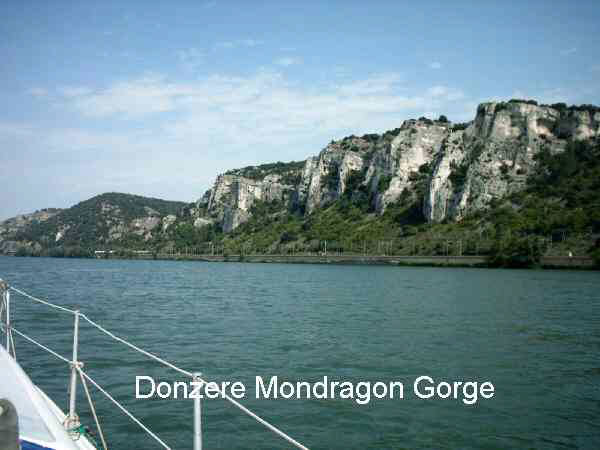
At the head of the canal was Viviers, where a marina run by the local yacht club has been extended and offers welcome facilities to visiting yachts. The town has been frozen in time and timber framed buildings line narrow cobbled streets winding up to a surprisingly magnificent cathedral from where the view of the surrounding countryside and pantiled roofs of the town is not to be missed.

That evening we dined with our new friends in the town square and were served a superb meal. Escalopes Florentine turned out to be turkey in a mouth-watering mushroom sauce, served with crisp, golden frîtes, and a pitcher of the local wine. Syrah is the local grape.
Temperatures remained warm as we moved on through Provençal scenery where ruined castles and churches clung to every crag. There was more industry at the nuclear centre of Cruas. Three huge cooling towers belched steam into the sky, but a little further on swans and cygnets dabbled in the reeds at the edge of a wetland sanctuary.
It was a long trip to our next stop, Valence, but worth the extra kilometres for the facilities offered by the marina of l’Eperviére which has been greatly enlarged and the entrance channel dredged. We caught up on our laundry and re-provisioned at the large supermarket.
The trip to Tournon next day was magical. On every side vistas of mountains and valleys opened up across to the Alps. Smaller rivers branched temptingly off the main channel; bearing notices “Sauf plaisanciers” (only pleasure boats). The many smaller motor boats which had left the marina that morning disappeared into these and I imagined them fishing, picnicking and swimming in the clear waters somewhere beyond the bend.
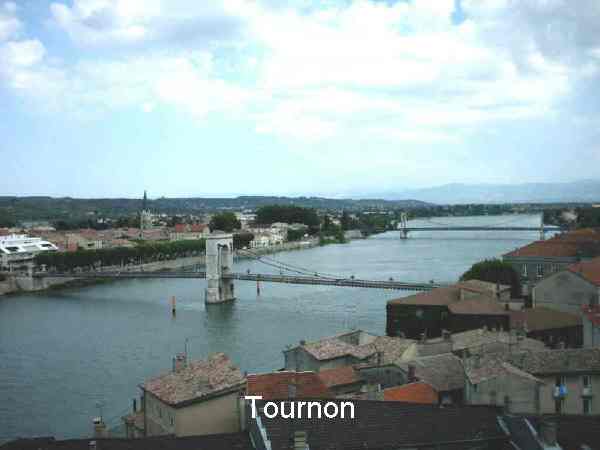
Tournon is on the opposite bank to Tain l’Hermitage, a fashionable wine growing area where the famous hermit’s chapel sits atop a conical hill entirely covered by vineyards. The names of the growers are prominently displayed on stone walls that divide one small field from another. These slopes are notoriously difficult to work. The tiny terraces demand back breaking cultivation by hand as no machines can operate on such steep slopes, but their near perfect exposure to the sun produces fine grapes.
In contrast to l’Eperviére the small marina had not been dredged and maintained and although we draw less than 1 metre we had to tie up at the entrance. We stayed here two days to take a trip on the famous Vivarais narrow gauge railway which makes a spectacular journey following the river Doux through deep gorges on the edge of the Massif Centrale to Lamastre, a gourmet town. We were disappointed to find that the famous street market was just closing as we arrived – surely bad timing?
We also visited Tournon museum, housed in the 16th century chateau, where one room was given over entirely to exhibits relating to the river and the efforts made to turn it into the navigable waterway of today. We saw a model of a paddle steamer with a wheel which could be lowered for the purpose of ‘gripping’ the river bed; and an oil-painting depicting a team of more than fifty wild-eyed and sweating horses hauling a commercial boat through the torrent. Powerful 1500 tonne motor barges were not introduced until the 20th century and some of these are still in service, together with push-tow convoys 180m. long, and the ubiquitous 38.5m. péeniches.
A wind started that night and was still blowing next morning, straight from the north. We were worried that this might be the Mistral, the relentless north wind for which the Rhône is notorious. It knocked 1 km. off our speed next day but did not develop.
In the next lock, Girvans, the water surge was very strong and one of our lines came loose. The bows of the boat swung across the lock and John seized the line shouting to me to put the engine in slow ahead. This brought the boat under control and there was no problem. Generally we were feeling quite confident of our lock-handling skills. John usually steers the boat and I attach the lines, securing the aft line first so that John can take this whilst nosing the boat against the lock wall and I attach the forward line. We pass each line under a cleat or a carbine hook to give extra purchase against such events as we had just experienced.
We moored that night in the marina at Les Roches de Condrieu, an area famous for its white wines and also its waterway traditions. Bargemen were recruited from here and the town still hosts boat jousting tournaments. Behind the marina is a lake for swimming and wind surfing.
We had the wind against us the next day which took 2 kn. off our speed and at times we were reduced to 3 knots. We were now approaching Lyon, the junction of the Rhône and Saône and where industry is more noticeable, but there are still woods in between each factory, where the first fingers of autumn had begun to paint the leaves, and where swans and herons fished at the water’s edge.

The final lock was Pierre Benite, completed in 1966, with a fall of 11.80m. Once through we were soon approaching Lyon, and looking for a mooring. In the very heart of the town we found a stretch of quay designated for boats under 15m. Mooring rings were provided and weeping willows gave shade. We were impressed to be woken next morning by the sound of a pressure-washer as the quay was cleaned of dog fouling (an ever present hazard in France) and other detritus.
It was useful to be still in company with another boat and we took turns ‘minding’ the boats whilst we went to see the many sights of this busy metropolis, with an ancient old town on the right bank, surmounted by a Roman amphitheatre and museum, and a modern icing-sugar cathedral dominating the sky line.
We breathed a sigh of relief to have navigated the Rhône to this point, realising that for the most part our apprehensions had been unfounded. We had made good progress against the current, we had had no problems finding good mooring each night, the scenery and the weather had been wonderful, and the highlight of the trip had been the ancient towns and cities we had visited, together with the food and wine consumed. I thought the description of France as a “good museum followed by a fine meal with sunshine on top” was a pretty accurate one.
© Brenda Davison
